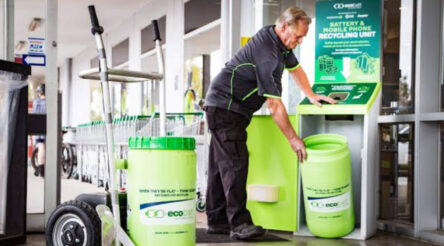Challenges in 3D printing adoption – Shams Rahman and Kamrul Ahsan

By Professor Shams Rahman and Dr Kamrul Ahsan
The COVID-19 pandemic has caused unprecedented damage to the global economy, with the federal government naming advanced manufacturing as one of six sectors of strategic importance for future growth.
This sector accounts for approximately half of Australia’s $100 billion plus annual manufacturing output, with the Australian industry minister emphasised that 3D printing (3DP) “…could be the future focus on Australian manufacturing”.
As the importance of manufacturing to Australia’s economy declined steadily since 1980s, Australian businesses and consumers became heavily dependent on outsourcing for goods and services from low-cost producing economies and have overlooked the hidden risk of supply chain vulnerability.
The COVID-19 pandemic has revealed the risks of being over reliance and prompted Australian policy-makers to emphasise on manufacturing locally using advanced manufacturing technologies.
The question is how can 3DP, as part of the advanced manufacturing technology, be a solution in realising economic boost, generating employment and minimising environmental impact in the post COVID-19 business environment?
As shown by our research, the benefits of 3DP is compelling (Figure 1) but the implementing of this advanced technology is challenging (Figure 2) which requires multi-pronged efforts (Figure 3).

The benefits of 3DP manufacturing industry are manifold. It can reduce manufacturing lead time and bring manufacturing closer to customers; transform global supply chains into highly flexible and responsive local supply chains which is essential during and after any disruptive situations such as COVID-19.
In turn, it can increase local employment, improve manufacturing capabilities, and boost Australian GDP.
By consuming less material for production, generating less waste in transportation, inventory and warehousing, and packaging, 3DP can contribute to the environmental sustainability.
Thus, the implementation of 3DP can be a huge win for triple Es, that is, economy, employment and environment in post COVID-19.
Challenges of 3DP implementation
Our research, with Australian firms and R&D institutions, identified several challenges of varying magnitude, and the efforts that will be required to overcome these challenges (Figure 3).
The three critical challenges relate to cost and quality of production, regulatory issues, and need for new skills (Figure 2). Therefore, the utmost and targeted effort needs to focus on these issues as a priority (see Figure 3).


Based on the analysis of ‘criticality of challenges’ and ‘level of effort required’ (Figure 4), the identified challenges are high both in criticality and effort necessity, termed as ‘Big Rock’ challenges.

Cost of printer:
Cost of printers is an impeding factor for the success of 3DP implementation, and it requires relatively higher R&D effort to overcome.
One of the manufacturers said that “Printer cost is obviously a massive investment for a commercial grade, industrial grade printer, at the very minimum $100,000 for basic FDM printer, $300,000 to $500,000 for anything more complex or $1.5 million for a metal printer.”
Quality of 3D printed products:
Although the quality of 3D products has improved over time, there are still issues with surface finish, use of colour, product strength, and printing precision. Effort required to overcome this challenge is high, however technologically feasible.
One interviewee said: “Due to technology issues sometimes, it is hard to achieve desirable quality, but I am hopeful one day it can be overcome”.
New skills requirement:
New skills are required for product design, materials development, sourcing, and to deal with reconfigured supply chains. Both businesses and governmental should devise policies for developing new skills.
One medical device manufacturer highlighted:
“Scanning and converting a file into a 3D printable file takes a lot of effort. It is not automated (and) you need smart people to do it. New skills for design and production (are) challenging and it takes time”.
Raw materials cost:
Currently, raw materials used are substantially more expensive than their conventional manufacturing equivalents and efforts are required to increase local R&D capability to reduce the cost.
One manufacturer stated: “We can only purchase our raw material from the printer supplier, which is expensive. We have no choice!”
Organisational readiness:
Organisations are not yet ready, and more effort is required to adopt the changes necessary to implement 3D printing. One medical device manufacturer mentioned: “The key is that all those products or processes need an efficient scanning and digitization processes and skills to run it.”
Regulatory issues:
With the use of 3D printing, new challenges will emerge relating to ethical, health and safety, intellectual property and piracy issues. To meet these issues government policy and regulatory intervention is indispensable.
One medical device manufacturer stated: “At the moment, the Australian Therapeutic Goods Administration (TGA) is doing a review of 3D printing devices and regulation of medical devices, drugs and all that stuff. There is no specific regulation for many 3D printing applications. It needs to be regulated.”
3D printing manufacturing could be one of the panaceas for simultaneously boosting the Australian economy and minimising environmental impacts in the post COVID-19 business environment. However, to realise the benefits it is crucial to overcome these ‘Big Rock’ challenges.
Professor Shams Rahman, is Professor of Supply Chain Management, College of Business and Law, RMIT.
Dr Kamrul Ahsan is Senior Lecturer in Supply Chain Management, School of Accounting, Information Systems and Supply Chain, College of Business, RMIT University.
Picture: Professor Shams Rahman
Subscribe to our free @AuManufacturing newsletter here.
@aumanufacturing Sections
Analysis and Commentary Awards Defence Manufacturing News Podcast Technology Videos










